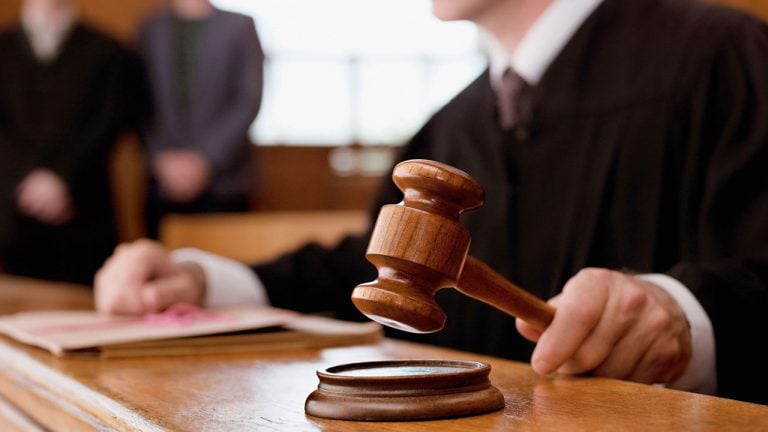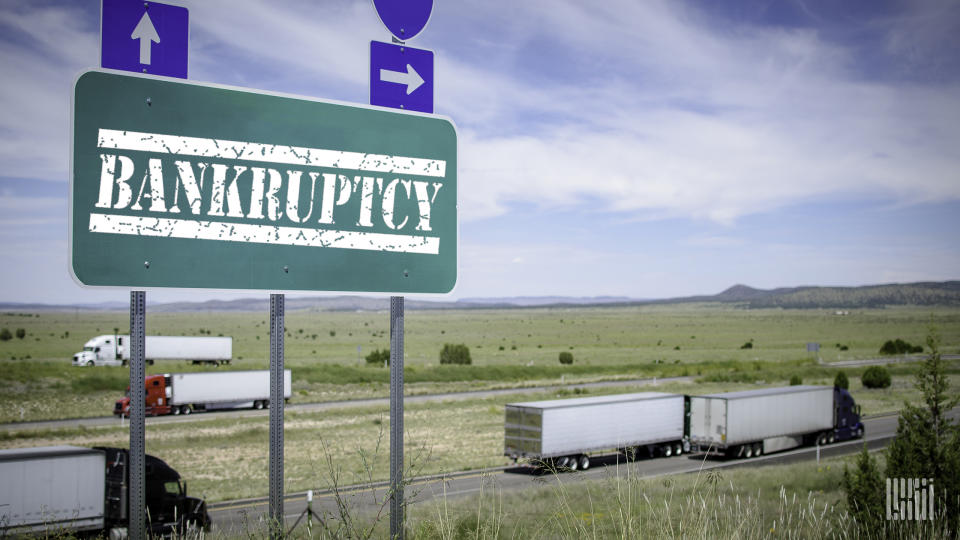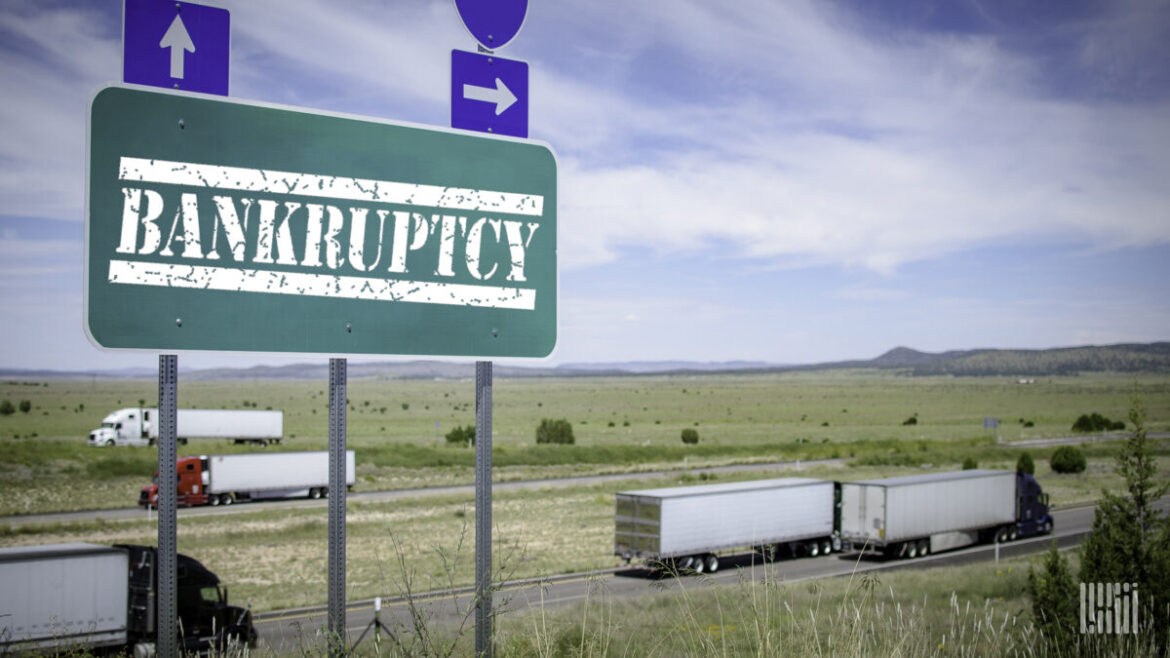 A recent research paper on SSRN by legal scholars scrutinizes the ethical quandaries and potential conflicts of interest surrounding Sullivan & Cromwell LLP’s involvement in FTX’s Chapter 11 bankruptcy filing. Study Highlights Legal Ethics From FTX Bankruptcy Proceedings The SSRN research paper entitled “Conflicting Public and Private Interests in Chapter 11” meticulously explores the controversial […]
A recent research paper on SSRN by legal scholars scrutinizes the ethical quandaries and potential conflicts of interest surrounding Sullivan & Cromwell LLP’s involvement in FTX’s Chapter 11 bankruptcy filing. Study Highlights Legal Ethics From FTX Bankruptcy Proceedings The SSRN research paper entitled “Conflicting Public and Private Interests in Chapter 11” meticulously explores the controversial […]
Source link
Chapter
Binance’s new chapter begins with hefty fines and compliance commitments

Binance issued a statement on Nov. 21 regarding its resolution of investigations from the U.S. Department of Justice (DOJ) and other agencies.
There, Binance stated that it is pleased to announce the resolution and admitted to past wrongdoing. The crypto exchange company said:
“When Binance first launched, it did not have compliance controls adequate for the company that it was quickly becoming … Binance made misguided decisions along the way. Today, Binance takes responsibility for this past chapter.”
The company said that the current resolutions acknowledge its role in “historical, criminal compliance violations” and allow it to “turn the page.”
Binance emphasized that the U.S. agencies do not allege that it misappropriated user funds or engaged in market manipulation. In that regard, it mentioned its other promises, such as its 1:1 backing of user assets, its commitment to allowing 100% withdrawals at all times, and transparency around its own crypto addresses.
The company also highlighted its recent restructuring efforts and past additions to compliance leadership. It noted that it will appoint its Global Head of Regional Markets, to the role of CEO, in line a statement from former CEO Changpeng Zhao today.
Binance addresses KYC/AML concerns
In a statement, the DOJ said that Binance violated financial laws including the Bank Secrecy Act (BSA) and failed to register as a money transmitting business.
The DOJ said Binance was required to register with FinCEN as a money services business and create an effective anti-money laundering (AML) policy but did not do so. Elsewhere, it said that Binance did not implement comprehensive know-your-customer (KYC) procedures: it neglected monitoring, never reported suspicious activities to FinCEN, and at times supported users who only provided an email address.
Binance appeared to acknowledge those issues, noting that it has recently expanded its anti-money laundering (AML) tools and capabilities. It also called itself one of the first major exchanges outside of the U.S. with mandatory KYC for all users.
International access to Binance also an issue
The DOJ additionally said that Binance violated the International Emergency Economic Powers Act (IEEPA) and described various violations around international transaction restrictions. The agency said that Binance failed to implement controls stopping users from transacting with sanctioned users and users in sanctioned areas.
The DOJ added that Binance did not fully block U.S. customers in 2019 in compliance with the law. Binance instead focused on retaining high-value VIP customers and providing those users with ways to circumvent restrictions.
Binance once again seemed to address those complaints in its statement. Binance said that it “takes sanctions compliance seriously,” maintains a standalone sanctions team, enforces KYC and IP blocks, and uses third-party tools to monitor transactions in real time. Furthermore, the company said that it has teams staffed with more than 70 members to engage with law enforcement and share information.
Binance has pleaded guilty: its statements address oversight in the relevant areas without contesting specific allegations. The firm has also agreed to pay over $4 billion in fines, retain an appointed monitor for three years, and improve compliance.

An 85-year-old Indiana-based trucking and logistics company and its affiliates recently filed for Chapter 11 bankruptcy protection less than nine months after it was acquired by private-equity firm Transport Acquisitions.
Founded in 1938, Otwell, Indiana-based Elmer Buchta Trucking, which offers bulk, dry van and pneumatic trucking services, has 100 drivers and more than 230 power units, according to the Federal Motor Carrier Safety Administration’s SAFER website.
No reason was given as to why the entities were forced to file for bankruptcy protection.
Transport Acquisitions purchased the trucking company and its affiliates in January from the Wright Family Investment Group, which bought the entities in 2008.
In court filings, Transport Acquisitions and ElenaRose Capital are jointly listed as the lead bankruptcy case as both have ownership in the entities. Besides Elmer Buchta Trucking, the petition lists two other entities in its Chapter 11 filing, Buchta Leasing LLC of Princeton, Indiana, and WBF LLC, of Otwell, Indiana. WBF has five power units and four drivers and hauls liquids and gases, according to the FMCSA website.
The petition, filed in the U.S. District Court for the Southern District of Indiana on Sept. 8, lists Louis Capolino of Apollo, Florida, as president and manager of the entities.
Elmer Buchta Trucking lists its assets as between $1 million and $10 million and its liabilities as between $10 million and $50 million. The petition lists the number of creditors as up to 199 but states that funds will be available to unsecured creditors once it pays administrative fees.
The two largest secured creditors listed in the petition are KTB Equity Inc. of Evansville, Indiana, and Peapack Capital of Morristown, New Jersey, owed about $22 million apiece for the entities’ equipment.
Attorney Weston E. Overturf, of Kroger, Gardis & Regas LLP of Indianapolis, did not respond to FreightWaves’ request seeking comment.
Among the trucking and logistics company’s top unsecured creditors are Buchta Leasing, owed more than $684,000; National Interstate Insurance of Richfield, Ohio, owed nearly $751,000; and Heritage Petroleum of Evansville, owed over $128,000.
The petition lists that the Internal Revenue Service in Indianapolis is owed nearly $36,000 for payroll taxes.
Prior to filing for bankruptcy, Capolino received $325,000 from January to August, according to court documents. A creditors meeting is set for Oct. 10.
Click here to read more articles by Clarissa Hawes.
Do you have a news tip or story to share? Send me an email or message me @cage_writer on X, formerly known as Twitter. Your name will not be used without your permission.
Read related articles here:
Truck driver fatally shot in Oklahoma traffic stop
Mississippi trucking company to pay $482,000 for PPP scheme
Trucking bookkeeper already in prison for embezzlement sentenced for PPP fraud
Missouri trucking company worker gets 6 years for money laundering, fraud
Utah trucking owner admits bribing FedEx manager, defrauding PPP loan program
The post 85-year-old Indiana trucking company files for Chapter 11 appeared first on FreightWaves.

In the complex world of finance and business, bankruptcy serves as a crucial mechanism that allows struggling companies to reorganize and regain financial stability.
One of the most well-known forms of bankruptcy is Chapter 11, a legal process in the United States that grants businesses the opportunity to restructure their operations while protecting them from creditors’ immediate demands. This article delves into the intricacies of Chapter 11 bankruptcy, its objectives, procedures and notable examples within the realm of the cryptocurrency industry.
Chapter 11 bankruptcy, explained
Chapter 11 bankruptcy, often referred to as “reorganization bankruptcy,” provides companies, both large and small, with the chance to rehabilitate their financial health while keeping their operations intact.
This chapter allows a debtor (the company) to propose a plan that outlines how it will address its financial obligations, including repaying creditors over an extended period, reducing debts and restructuring operations for improved efficiency and profitability.
Related: Prime Trust bankruptcy spotted by crypto community months ahead
The objectives of Chapter 11
The primary goals of Chapter 11 bankruptcy are twofold: to provide the debtor with an opportunity to reorganize its financial affairs and to maximize the return for creditors.
By granting the debtor a chance to revamp its operations and financial structure, Chapter 11 aims to facilitate the company’s return to profitability, safeguarding jobs and business continuity.
The Chapter 11 bankruptcy process
- Filing for bankruptcy: The process starts when the struggling company files a Chapter 11 bankruptcy petition with the appropriate federal bankruptcy court.
- Automatic stay: Upon filing, an “automatic stay” is imposed, halting most creditor actions against the company. This provides the debtor with temporary relief from creditor pressure, allowing for the formulation of a reorganization plan.
- Creating a plan: The debtor is typically granted a limited period to exclusively propose a reorganization plan. This plan details how the company will address its debts, reduce costs, and streamline operations. The plan must be approved by creditors and the court.
- Creditor voting: Creditors vote on whether to accept or reject the reorganization plan. If a majority of creditors in each class vote in favor, the plan moves forward.
- Confirmation: The court then evaluates the plan, ensuring it meets legal requirements and is fair to all parties involved. If approved, the plan is confirmed, and the debtor begins executing it.
- Implementation: The company now operates under the confirmed plan, making necessary changes to fulfill its commitments and restore financial viability.
Chapter 11 bankruptcies in the cryptocurrency industry
The cryptocurrency industry, despite its rapid growth and potential, has witnessed its share of financial struggles and legal complexities. Several companies within this sector have turned to Chapter 11 bankruptcy to navigate financial difficulties:
Prime Trust
After encountering a deficiency in customer funds, crypto custodian Prime Trust has sought refuge under Chapter 11 bankruptcy protection in Delaware on Aug. 15, 2023. The entities pursuing Chapter 11 relief encompass Prime Core Technologies Inc., Prime Trust LLC, Prime IRA LLC and Prime Digital LLC.
Prime Trust Chapter 11 bankruptcy filing: https://t.co/esfnhDmGjK
25,000 to 50,000 creditors
largest unsecured claims are customers
estimated liabilities between $100 million to $500 million
estimated assets between $50 million to $100 million pic.twitter.com/DkFOwvn9Xz— Pledditor (@Pledditor) August 15, 2023
Bittrex
Cryptocurrency trading platform also filed for Chapter 11 bankruptcy protection in May 2023. The bankruptcy application pertains to multiple entities, including Bittrex Inc. based in Seattle, two Bittrex entities located in Malta and an associated entity named Desolation Holdings LLC.
SVB Financial Group
In a bid to preserve value, SVB Financial Group in distress has submitted a self-initiated request for court-monitored restructuring via Chapter 11. This move occurred in March 2023 and was directed toward the United States Bankruptcy Court.
Genesis Global Capital
Genesis Global Capital, a cryptocurrency lending entity, had filed for Chapter 11 bankruptcy proceedings in the Southern District of New York in January 2023. As per the filing on Jan. 19, the company has approximated liabilities and assets within the bracket of $1 billion–$10 billion. This action extends to its parent company, Genesis Global Holdco, and an affiliated lending division named Genesis Asia Pacific, both of which sought the shelter of bankruptcy protection.
Core Scientific Inc
In December 2022, Core Scientific Inc, a major publicly traded cryptocurrency mining firm in the United States, attributed its Chapter 11 bankruptcy filing to a combination of factors. These included declining Bitcoin (BTC) prices, escalating energy expenditures and a significant unpaid debt of $7 million owed by the insolvent crypto lender Celsius Network.
FTX
In November 2022, the Bahamas exchange’s abrupt bankruptcy followed $6 billion in withdrawals in 72 hours, with Binance not aiding. Alameda Research, FTX’s linked hedge fund, also filed bankruptcy. The high-profile failure involved founder Sam Bankman-Fried.
Related: Who is Sam Bankman-Fried: Profile, biography, FTX, arrest and more
BlockFi
In late November 2022, BlockFi, a crypto lender, filed for Chapter 11, following FTX’s collapse just two weeks prior. BlockFi cited a liquidity crisis due to its significant exposure to FTX. The New Jersey-based company had depended on a $400million FTX credit line for survival, especially after fellow crypto lenders Voyager Digital Ltd and Celsius Network went bankrupt earlier in 2022.
Celsius Network
In July 2022, Celsius, a crypto lending platform, declared Chapter 11 bankruptcy due to the downfall of TerraUSD and Luna, which led to the crypto lender’s demise.
Three Arrows Capital (3AC)
On July 1, 2022, the crypto hedge fund Three Arrows Capital filed for bankruptcy, citing the May crash of stablecoin TerraUSD and Luna as the cause.
Voyager Digital
On July 6, 2022, Voyager Digital, a crypto lender headquartered in New Jersey, filed for U.S. bankruptcy. The reason was a default on a crypto loan exceeding $650 million by Three Arrows Capital.
Chapter 11 bankruptcy serves as a crucial tool for businesses, including those in the cryptocurrency industry, to restructure their operations and overcome financial difficulties. By providing a framework for rehabilitation, it balances the interests of debtors and creditors while allowing companies to maintain operations, protect jobs and contribute to the economy.




